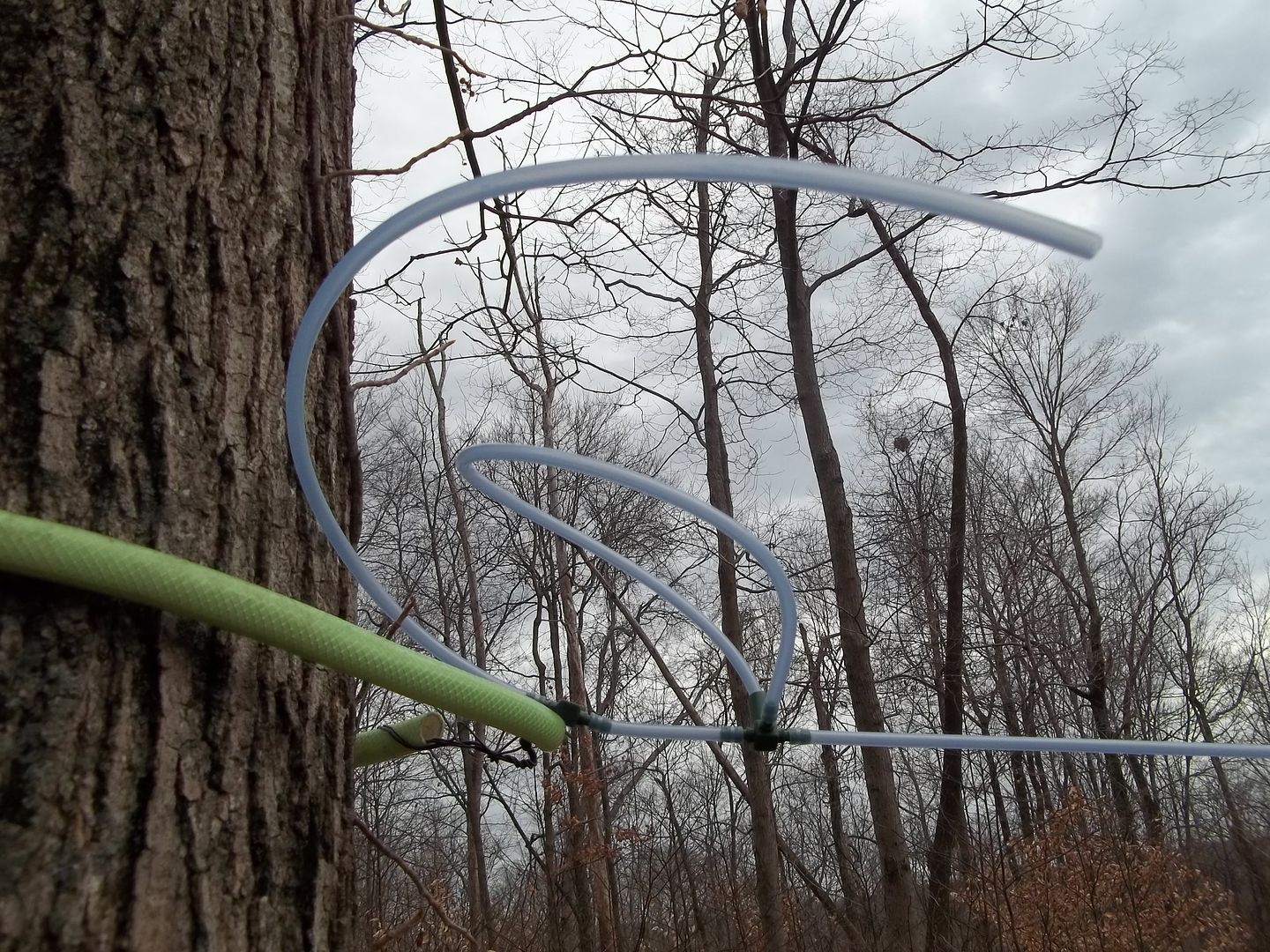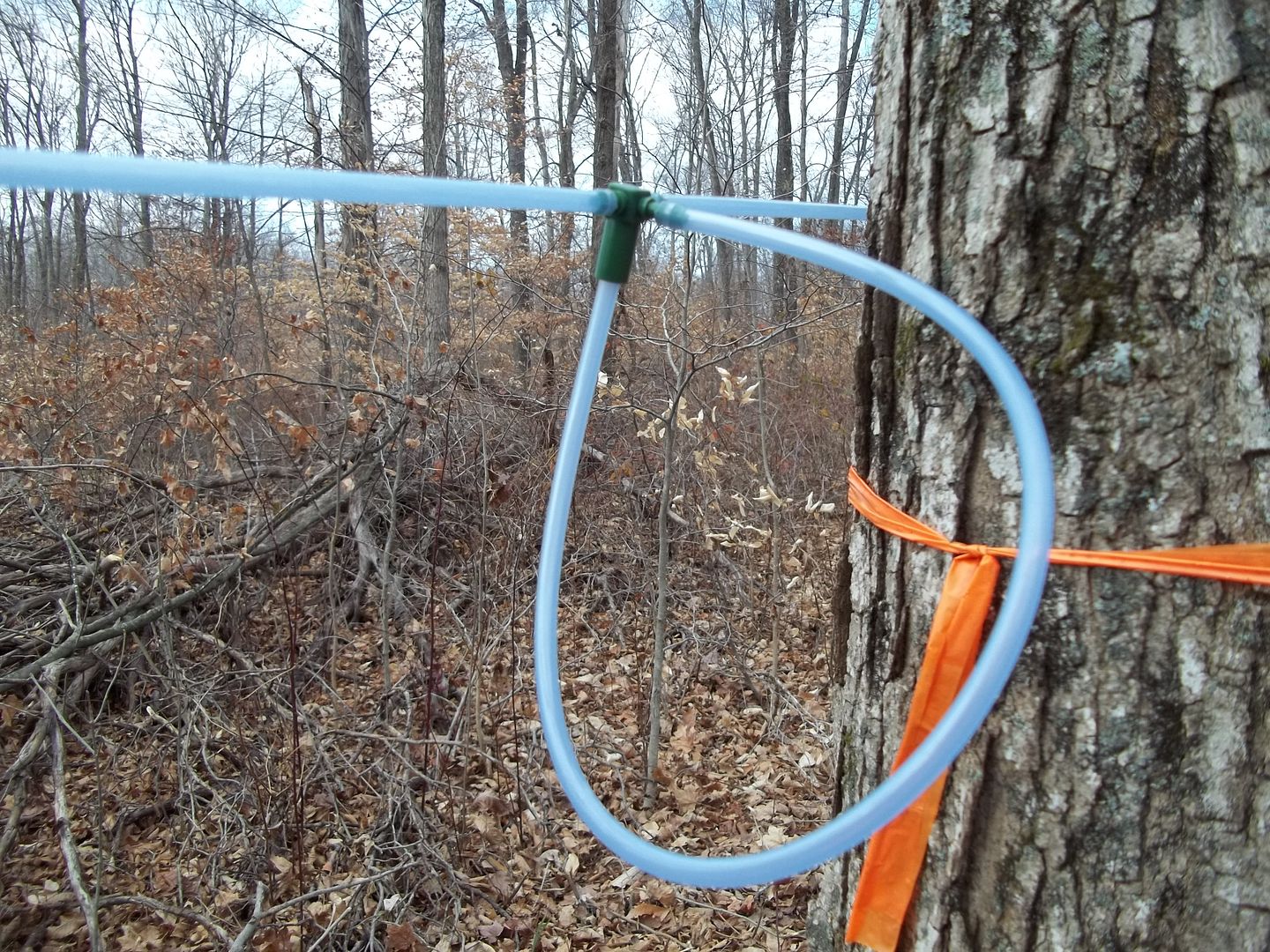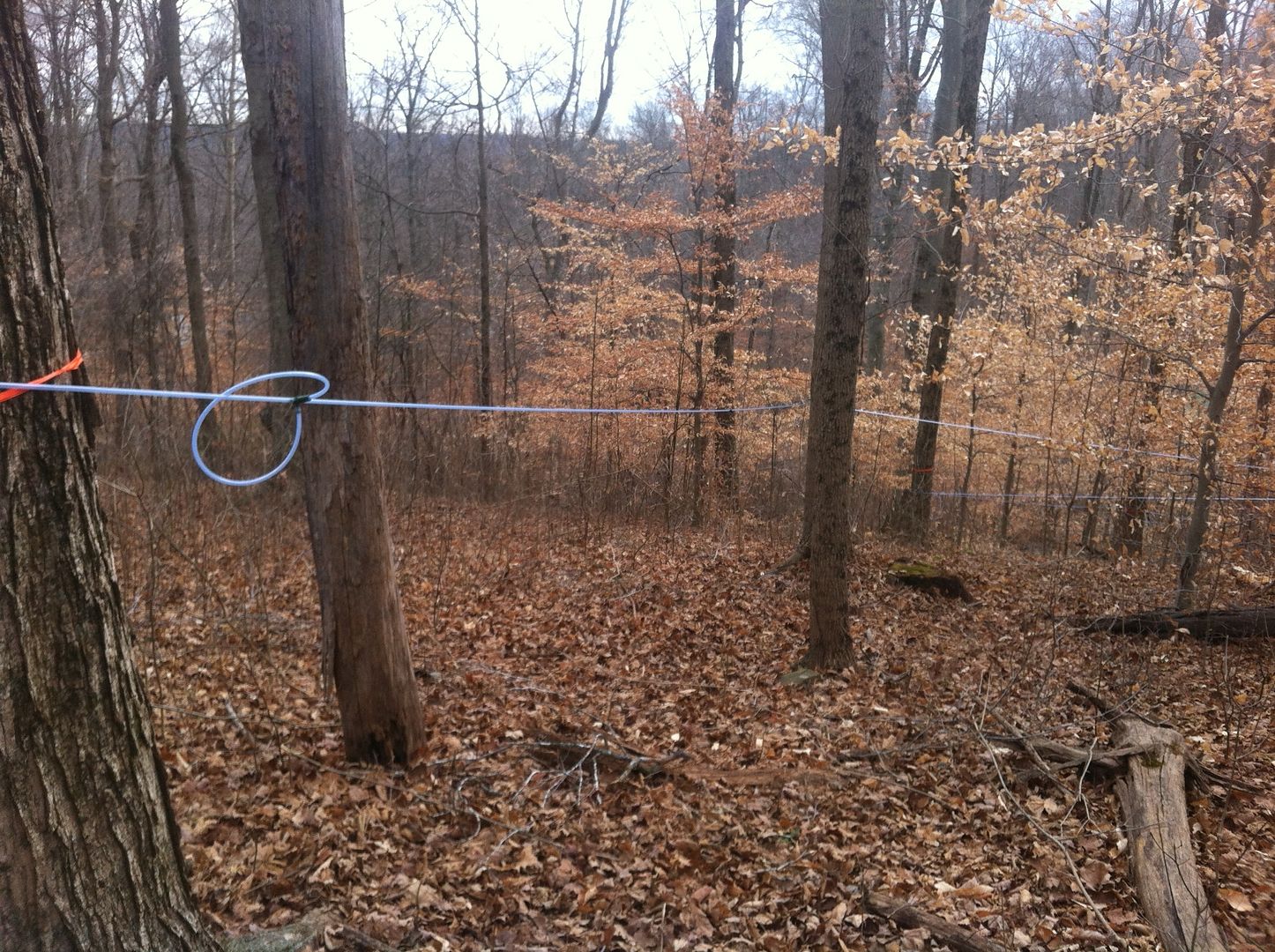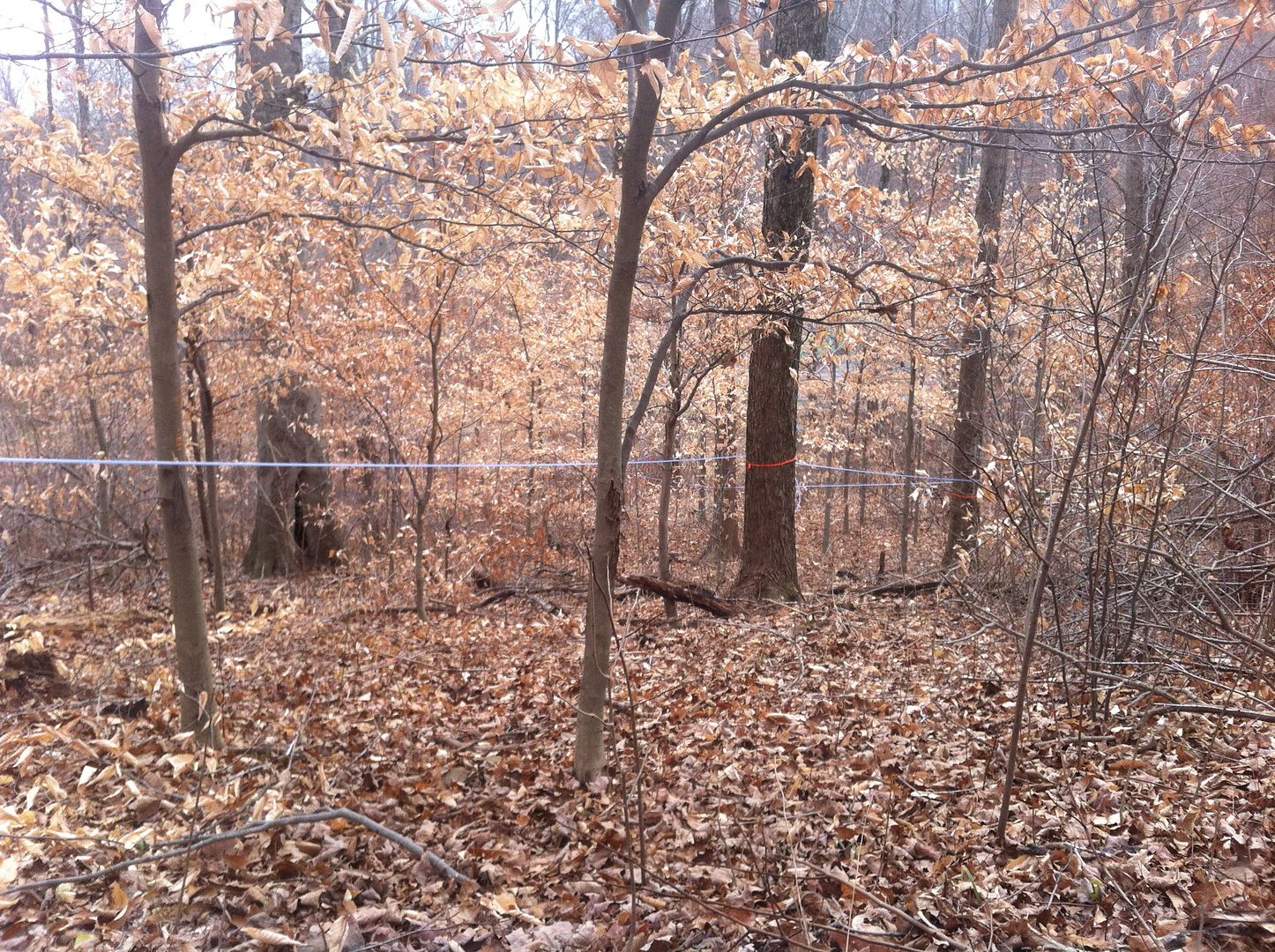Spent the afternoon in the woods, running some tubing. This will be our first attempt at sap collection using anything other than buckets, so it is very much a work in progress and learn as we go.
Tubing has been used in sugarbushes for several decades, in a few different configurations. The first attempts relied on gravity to simply carry the sap to a central collection point....less time emptying buckets is always a good thing. Soon after, someone decide to adapt an unused suction pump from a dairy, in order to try and extract sap rather than simply letting it drip out of the tree. And it worked. Today, you can still find gravity setups but most larger producers have switched to vacuum pumps, both electric and gasoline powered, to ramp up production.
What we are trying is a kind of hybrid setup. It's a fairly recent development, and it's gathering converts rapidly in the maple community. It's not suited to every sugarbush, as it needs a slope with a decent fall in order to function properly.
It starts by replacing the standard maple tubing of 5/16"ID with a smaller, 3/16"ID product. Basically you begin at the top of the slope or hill, and string the tubing from maple to maple all the while maintaining that all important downward slope. The more fall the better. The idea is to gather enough sap to completely fill the tubing, with no air space....that's the reason for switching to a smaller ID, as the larger 5/16 seldom if ever filled completely. With the smaller stuff, it will easily fill the tubing with no air gap, creating a "plug" of maple sap. Now is where gravity helps us out...as gravity pulls that solid, tube full of sap down the slope, a natural vacuum develops behind it, (or further up the hill). This natural vacuum works at the taps, and actually pulls the sap into the lines.
Almost a siphon of sorts, similar to what happens when a pond is drained. The weight of the falling water(sap) keeps pulling additional water(sap) from the pond(trees). Slick. Obviously the trees furthest up on the slope will have the greatest vacuum, but they claim a benefit to all trees on the line.
The beginning. This will be a tall tap, as we try for all the fall we can get. This first tree is actually on level ground, on top of the hill. Ambitious I know. The loop has one end connected with a three way fitting, and the other end is tucked into a sleeve made on the same fitting. It's called a drop. This keeps the end clean until it's time to tap, when the loose end will connect to the spile(tap). The long extra tube will connect to a vacuum gauge. Hopefully we will get a reading.

Another shot of the drop, with the sleeve pointing down and the line tucked up inside.

Zigzagging down the hill, maple to maple, always running down.


Runs a long, back and forth pattern.
